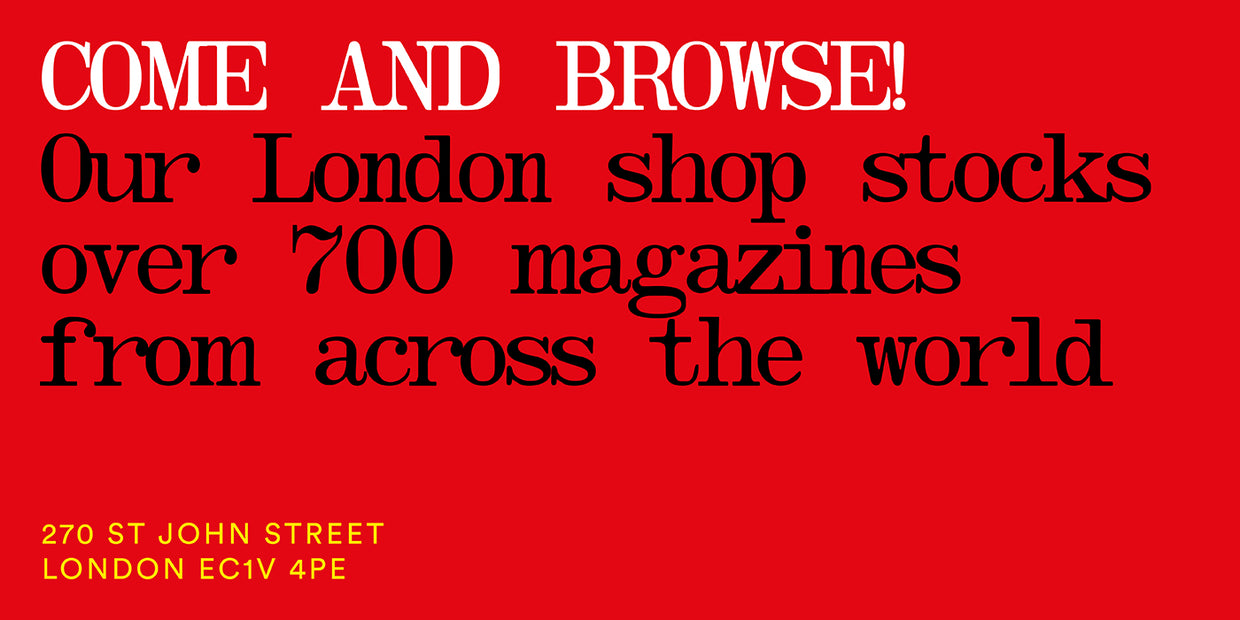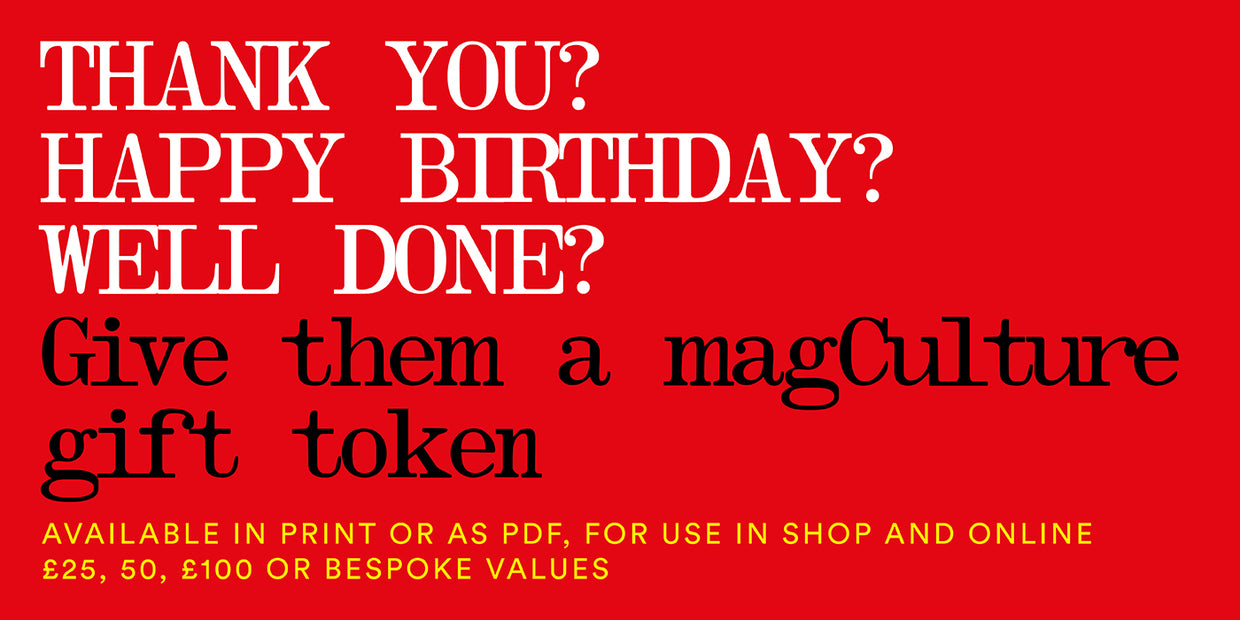

Elizabeth Price, Never Too Small
New Australian interiors magazine Never Too Small covers homes of 50sqm and less. It developed out of a YouTube series of the same name, and according to editor Elizabeth Price, ‘Adding a magazine into the mix was about wanting to be more to our audience.’
Refreshingly unpretentious and vividly colourful, issue two of Never Too Small has just been published. As she shares her working week, Elizabeth explains more about the origins of the magazine and the inspiration and support provided by experienced magazine makers.
What are you doing this Monday morning?
My routine starts with herding two young boys through their own morning routine and onto our e-bike. Their school is on the way to our office, so it’s pretty handy. When I get to the office, if I’m first in, I get the Moccamaster going but usually Eloïse beats me to it. I respond to any quick-reply emails and then we kick off the week with an all-in meeting, which usually involves a rundown of what’s coming for the week and the magazine is just one little part of that.
The bulk of our team works across the weekly publishing cycle of our YouTube channel and in addition to producing, filming, directing and editing those episodes each week, they look after any brand partner content we’re delivering, all the content for our website and Instagram etc., our digital guides and our books… They’re amazing.
Today, Eloïse and I (it’s just the two of us running the editorial for the magazine) fill them in on where we’re up to with pulling together all the Instagram marketing copy for issue two and then we wrap it up as we have to trot up the street for an interview and a shoot for issue three.

Describe your work environment
Our work environment would not be everyone’s cup of tea. Firstly, you have to like dogs as there are sometimes four of them running around the building. It’s also pretty idiosyncratic. We’re in three two-storey interconnected shop fronts and we’ve had to do quite a bit of DIY and still have more DIY to do to make it what we want it to be but it suits us in a way. My desk is right by a window, which is lovely, but the view is a little less lovely: I look out onto the Neighbourhood Justice Centre and the iconic (to Melburnians at least) Tote Hotel. Both make for some colourful people watching and it all feels very Collingwood.

As for my desk, it’s a mess. I’m not good at keeping it tidy so the untidiness typically builds and builds until we get to the end of an issue and then I have a purge to give myself a clean slate for the next issue so it can start all over again.
On the music front, I’m in a bit of a musical rut but one that I’m very much enjoying at the moment but I’m not sure all my roommates feel the same: MJ Lendermen’s ‘Manning Fireworks’ album is on regular repeat, along with Waxahatchee’s ‘Tigers Blood ’and Gillian Welch and David Rawlings’ ‘Woodland.’

Which magazine do you first remember?
Smash Hits, the Australian edition. I’m pretty sure this is how Jason Priesley and Edward Furlong found their way onto my bedroom wall. I actually managed to do a week or so of work experience at Smash Hits when I was a teenager. I can’t say they let me do much aside from responding to fan mail and giving the photocopier a workout, but still, it felt exciting to be in the building.

Aside from yours, what’s your favourite magazine?
Noble Rot magazine is a bit of a favourite and was a big source of inspiration for us when we were getting started. Even though Dan Keeling and Mark Andrew started out with the magazine and then moved into the world of restaurants, we have always been (and remain) very interested in business models that involve magazines plus other things or distinct channels for engaging with that particular niche audience.
Noble Rot also gave us some clues that we didn’t need to have it all figured out from the beginning and that we could test and play and make the rules up as we went along a bit. Deciding on our masthead design for our first issue felt like such a high stakes decision at the time, but during this process we clocked that the team at Noble Rot didn’t land on their current masthead design until issue 6 and now they’re at issue 37. That gave us a heap of confidence to just try things and not be afraid to change it up.

Describe Never Too Small in three words
Never. Too. Small.
Just messing—Playful, curious, unpretentious.
That title, Never Too Small, contains a promise. Can you enlarge on that promise?
Experience and exposure has shown us that the most creative and clever design is found in some of the smallest homes. Constraint breeds creativity as we know. With more and more of us living in smaller spaces and more and more of us living in cities, it makes sense to us to share knowledge, experience and inspiration for how this way of living can be fulfilling and joyful. Even the smallest homes are full of potential.

Never Too Small shas been successful as a YouTube series and book; why add a print magazine?
Adding a magazine into the mix was about wanting to be more to our audience. Our YouTube episodes and our books are pretty neat little boxes in a way (though, we have experimented a little with the former)—we feature homes of 50sqm or under and they have a (deliberately) set formula.
We talk about the magazine as being an expression of the overflow of the conversations that we have with all the incredibly talented and fascinating architects and designers we have the privilege of meeting from all over the world each and every week. Naturally our conversations stray into subjects outside of the specific project we’re interviewing them about for our YouTube channel, and into areas that we’re interested in exploring more deeply too. So the magazine started out as a place for us to do this and also to tap into broader but adjacent themes and subjects to small footprint home design, such as urban art and culture, sustainable and experimental design and urban renewal.
The feedback on issue one has been pretty humbling. We were pretty tough on ourselves as a team in terms of getting the curation for issue one right. Not a single member of our team comes from a design background, so we really wanted to create a magazine that was for design lovers like us, but with no expectation of prior knowledge at all. This is why you’ll see a lot of footnotes in the mag. On your website, you describe our mag as ‘unpretentious’ and that made my day, because that tone was hugely important to us. We kept having conversations within people about how we had had enough of magazines and YouTube giving people such unrealistic expectations of how a home and life should look.
I should say we had some extraordinary mentors to guide us through issue one—Lara Burke and Lou Bannister, the founders of Frankie and Lunch Lady magazines—and certainly would not have been able to pull it off without them. We’re blessed that Lara has stuck with us too and continues to design each beautiful issue. Lou was always very quick to tell me if anything was too wanky. That’s sort of where a line in our launch video for the magazine was birthed from: ‘design without the swank and the wank”’ Perhaps that should have been my three words: Design without wank.

Please show us one spread that sums up how the magazine works, and gives a sense of what the reader can expect from the mag.
In each issue we make sure we give the readers what they want, so (at least for now) there are always three features on small footprint homes from around the world. We also ensure there’s plenty of inspiration on the interiors as well as the design side by seeking out creative people who live in small homes. There’s a bit of looking back at design icons and examples of iconic architecture that offer contemporary relevance and we like to balance those pieces with Q&As with designers with quirky and accessible practices that readers can easily take ideas and inspiration from. There are lots of beautiful things and spaces to look at, but (we hope), presented in a relatable way and the tone of the storytelling is similarly plainspeaking, curious and a little playful.

What has the magazine taught you that may be helpful to anyone else planning to launch one?
There are so many mistakes to make in making, printing and distributing a magazine so align yourself with people who have done it before—a lot. We couldn’t afford to hire a bunch of experienced people so we brought Lou and Lara on as consultants across our first issue and boy did it pay dividends. I have no doubt they saved us what we paid them and more in the mistakes they saved us from making with their combined 40 years of experience in print mags. And from there, surround yourself with experience and excellent contributors who are delightful to work with.

What are you most looking forward to this coming week?
I am off to Sydney for a few meetings and to direct a photoshoot with an artist and one of the small home residents we’re featuring in issue four. Travel is pretty rare for me so it feels like a bit of a treat. It’s also a treat to be able to direct one of our shoots happening outside of Melbourne as it’s typically a matter of preparing a solid brief and trusting all will work out with the wonderful photographers we work with around the world. And it does, by the way. Work out.
Buy your copy from the magCulture Shop



